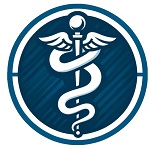Shadowing doctors is an integral component of medical school applications, with admissions committees expecting that prospective applicants have extensive experience shadowing doctors to demonstrate an in-depth knowledge of medicine.
Ideal shadowing experiences should offer a broad view of healthcare; for instance, family medicine differs significantly from emergency care or cardiology.
How to Get the Most Out of Your Shadowing Experiences
Shadowing experiences are one of the more unique components of a pre-med applicant’s application, standing out from clinical experience and traditional volunteerism by being difficult to quantify in hours. Therefore, it is crucial that applicants prioritize these shadowing opportunities carefully when scheduling them into their schedule.
Finding shadowing opportunities may seem like a daunting task, but there are resources available to you that will make it easier. Reach out to your personal physician, school’s premed or academic advisors, and local medical students; ask for their assistance in finding physicians that specialize in areas of interest; prepare an email explaining your motivations and expectations from this experience;
Shadowing provides an insight into the daily life of physicians and serves as an indication that you’re dedicated to medical career. When combined with other experiences such as international programs offered by IMA, shadowing makes an indispensable addition to an impressive application.
Getting Started
Shadowing medical specialties is an invaluable way for undergraduate students considering attending a BS/MD program and high schoolers who recognize medicine as a potential career to learn about different specializations and gain experience navigating difficult ethical dilemmas like end-of-life decisions and resource allocation, providing invaluable experience as well as providing insight into developing the moral compass necessary to thrive in medicine.
Starting out shadowing is easiest if you already have connections with physicians; personal connections, family friends or your own doctor could all work as good sources. But even without such connections, hospitals or professors who teach premed courses at your undergraduate institution could provide access to physicians who have accepted students in the past; make sure you ask if there’s still room and when possible discuss your responsibilities and expectations of shadowing with them directly.
Tracking Your Shadowing Hours
As you gain experience shadowing, be sure to track your time. Being able to articulate these experiences clearly in your personal statement and essays requires having clear records of each interaction that could help explain what was learned from each one.
Medical schools typically expect applicants to medical school to show evidence of shadowing hours on their transcript and AMCAS Work and Activities sections, and it helps if you can discuss your experiences during interviews and on applications, talking about interactions with physicians to demonstrate why medicine may be right for them.
As well as completing shadowing hours, it’s also crucial to gain more active clinical experiences if you plan on majoring in an area such as internal medicine or pediatrics. But be wary of taking on too many clinical responsibilities, lest this impact your grades or other priorities such as volunteering or research.
Verifying Your Shadowing Experiences
Aspiring students may feel intimidated to approach physicians to shadow them due to the misperception that doing so will interrupt the doctor’s workflow and inconvenience him/her. But most physicians welcome hosting students; you can find one by speaking to pre-med/academic advisors, asking family and friends, visiting hospitals and searching online.
Medical schools require applicants to document their shadowing experiences, but it is essential that applicants convey the depth of their insights in a compelling narrative form. Describing a particular case that left an impactful mark or an innovative procedure observed, or recounting doctor-patient interactions which capture your interest will resonate more with admissions committees than simply compiling numbers.
An applicant’s best bet for success when applying is to strike a balance between shadowing and studying. Utilizing digital calendars and scheduling study sessions alongside shadowing opportunities can ensure academics remain the top priority. Shadowing can provide invaluable experience that could be pivotal in the application process.
